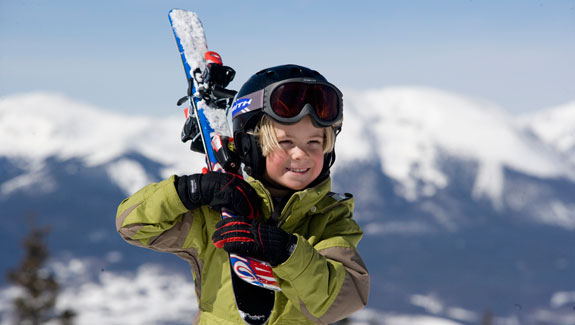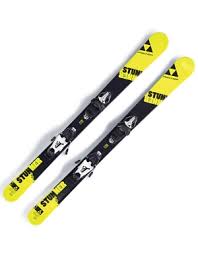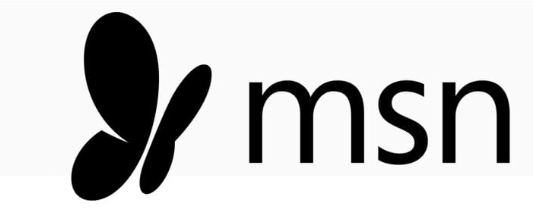When our girls started skiing, we put them on tiny K2’s. One pair was all purple for my oldest, and my youngest had a pair with SpongeBob Squarepants graphics. Our kids were thrilled, as were we, since these hand-me-downs from a family friend saved us an investment in ski equipment.
My wife and I would valiantly ski with one in between our legs trying to teach them the intricate skills known simply as “French Fries” and “Pizza Pie.” After two hours our quads would be burning and we would gratefully hand-off our tired toddlers to their grandparents before we hit the mountain for some real skiing. If you’re a parent with small children new to the sport of skiing, you can relate.
Lucky for us, kids grow and soon master the basics of how to link together turns and stop on a dime. When that happens, it is time to make the move from little kid starter skis, which are essentially just two planks of wood that slide down the mountain, to a pair of youth performance skis with some shape to them. Get a kid a good pair of skis, along with a helmet and goggles, and they are ready to begin tackling some runs that will make them bonafide skiers for the rest of their life…. not to mention have fun skiing with mom and dad. But how do you know which skis are the best for your son or daughter?
The future of skiing always depends on getting the next generation excited about it. Here are our tips for finding the right set of skis for your child.
Ski | Best For | Pros | Cons | Price | |
Head Supershape Team | Brand new skiers | Affordable and suitable for older kids | Not suited for terrain park skiing | ||
Atomic Punx Junior | All-purpose, all-mountain | Versatile and has great flex | Lots of older models on the market; buy recent model | ||
Volkl Revolt | Terrain parks | Affordable terrain park ski | Wide build not as good for packed groomers | ||
Fischer Stunner | People who want easy setup | All-around ski that comes with bindings | May wear quickly |
How to Find the Right Size Skis For Your Child
Here are a few things to keep in mind when looking for youth skis:
- Sizing a child for kids skis is simple and easy to do. Kids skis are very different from adult skis that have different skill levels, waist widths, and flexes. Nearly all kids skis with the exception of some high performance powder, or race skis are nearly identical.
- The most determining factor when deciding what size ski your child should be in is their height. Since most children are height and weight proportionate any junior ski that falls between their eyebrows to their chin is acceptable.
- If your child is a more experienced skier that is capable of linking parallel turns it is better to lean towards the longer side (up to their eyebrows). If you have a newer, less experienced skier

Kids skis don’t need to be high-performance, but they do need to be built with quality. who is still snowplowing, or still developing their skills, a shorter ski (right about chin height) will be easier for them to learn with.
- The easy way to size your child for skis would be to measure their height in centimeters. If your child is a stronger, more aggressive, or more experienced skier, subtract 10 centimeters. If your skier is a newer, or less experienced skier that is still gaining the basic skills, subtract 20 centimeters.
- Kids skis are fantastic learning tools and are strictly designed for children weighing less that 100lbs for skis measuring 120 centimeters or shorter, and 150lbs for childrens skis measuring 150cm or shorter. Lightweight adults should not be skiing on kids skis. Junior skiers with very strong skills weighing more than 100lbs should be skiing in adult skis. Strong skiers will be able to pull the bindings out of the softly constructed kids skis.
- Kids skis are only designed for youngsters up to adolescent age. Skis for teenagers are a whole different animal since older kids will ski on either tweener skis or even adult skis, depending on their height, weight and ability level.
- Bigger is not necessarily better when buying skis for your child. According to a recent article published on health and improper ski sizing, there is a lot of controversy in the market right now about kids skiing on skis that are too wide. It can cause hip displacement since the hips are working overtime on wider width skis. In general, skis that measure 90mm wide and above are just too wide for kids, due to the fact that hips are still developing until children reach their late teens. Here is a sizing guide that we like, courtesy of a Minnesota nonprofit.
- When it comes to determining the best length skis for your child, it’s a question of if you are trying to get one or two years out of them. If your goal is for your child to ski on the sticks for just one year before handing them down to a younger sibling, then the ski length should be somewhere between your child’s chin and the nose. For a longer life of two years, measure from the nose to the forehead. Anything longer isn’t safe for the child to ski and the fact of the matter is that kids typically outgrow skis in 1-2 years anyway.
- Skis are more important than bindings. The binding can be adjusted to fit your child’s boot and ski, but the ski itself is where you should invest the money.
- If your child is about 13 or older (depending on their growth), consider an entry-level all-mountain ski. They are often of higher quality, and if you are a skiing family there is a good chance they will get used even if your child outgrows them.
If you are in doubt, go to a local ski shop specializing in alpine skis, or consult an instructor from the Professional Ski Instructor’s Association to help you navigate the ski market.
Kids Ski Construction
Kids skis are designed to be soft, forgiving, economical, and easy to learn with. They typically have a soft, composite core that requires little mass or technique to make the ski bend, flex, and react when it should, when minimal pressure is applied to the ski.

Most child skis are made with a cap construction that makes the ski lighter weight and more forgiving. This method of building skis is the most economical, and perfect for the lightweight, newer skier.
Other more advanced kid’s skis may have vertical sidewalls, or wood cores. These types of skis are typically reserved for more aggressive, experienced skiers, or those that require a race ski. They are more demanding and require a much stronger skill set to properly bend and flex the ski to make it react when and how it should.
Rocker
Most child skis now have a Rocker included in the tip of the ski. Rocker is the slightly bent up or reverse camber shape that skis have. Think of the tip of the ski as being pre-flexed that allows the ski to engage into a turn a little quicker and easier as soon as the ski is tipped on edge. If your junior skier is still snowplowing, rocker in the tip will cause the ski to grab the snow a little easier, requiring less effort to push out that snowplow.
Kids Skis With Bindings
Many kids skis that you will find have bindings that are included with the skis. This is always the recommended route to go, for simplicity and compatibility. Kids skis with bindings never need to have the bindings removed to be re-drilled for proper fitting of the boots. The bindings only need to be slid into the appropriate place for that particular child’s boots, and have the ability to be moved when your child changes boots without compromising the integrity of the ski.
It is strongly encouraged that a certified binding technician always installs, adjusts and tests your junior skier’s bindings every season. Alpine ski binding are the most important piece of safety equipment to help prevent injury on the slopes. Certified binding technicians have the special tool required to ensure that the binding releases once a specific amount of pressure is applied to the binding.
Kids Skis Without Bindings
Many junior skis are available without bindings. These are called flat skis. They do not come with a binding and require that a binding must be purchased separately. The general guideline for purchasing a binding is to select a brake width that is equal to or greater than the waist width of the ski, but not greater than 15mm. Junior bindings are only compatible with most kids skis strictly due to the fact that they have shorter screws that will not puncture the base of the ski when installed.
Should you buy skis with or without bindings? Totally your call. If your child is in to ski racing, and you have perhaps invested in a high-performance boot, you may want to shop around for a high-performance binding that will work well with it. For most beginners, though, the binding that comes on the ski is perfectly fine, as long as it is adjusted well. The key for newbies is to set the binding so the ski will pop off easily in a wipeout, avoiding knee or leg injuries. More experienced skiers want their ski to remain on even when considerable pressure is applied.
Kids Twin Tip Skis

Lots of kids these days are interested in Twin Tip skis, and they should be. A Twin Tip ski has a turned up tail that mimics the tip shape of the ski that may be used for freestyle skiing if they want to, or just regular all mountain skiing. One thing to consider about twin tip skis is the fact they do ski a little bit shorter than they actually measure. The turned up tail is measured in the total length of the ski, but none of the tail comes in contact with the snow. It is recommended that you increase the size of a Twin Tip ski by 5 centimeter compared to a traditional shaped ski. Some Junior Twin Tip skis have stronger flex patterns and wider waists that may come in very handy for stronger or more aggressive skiers.
Best Skis For Kids
By the time kids are ready for their second pair of skis, the offerings are much more varied. There is more shape to the skis and even a little bit of rocker that helps initiate the turn. And of course, there is always a girl’s version and a boy’s version of each. Below are some new and noteworthy kids’ skis for the 2022-23 season.
Best First Time Ski for a Newbie: Head – Supershape Team (here)
This ski is ideal for kids who are first time skiers who will probably stick to groomers, and want many of the same features as their brother or big sister. The Supershape comes in a width as narrow as 64cm and is designed for beginner skiers who plan to focus on turning and carving, not so much for ski racers or kids who plan on hitting the terrain parks.
The Supershape comes in a width as narrow as 64cm and is designed for beginner skiers who plan to focus on turning and carving, not so much for ski racers or kids who plan on hitting the terrain parks.
The skis actually accommodate kids who are a little older and taller too. You can get them in up to 157cm, which is longer than some other brands.
You can find these skis with or without bindings — adding bindings to the package isn’t a bad idea if you are indifferent to which ones you are adding to the ski.
This is a relatively new ski, so you probably aren’t going to find a lot of used options out there. Find here on Amazon.
Pros:
- Easy on the budget
- Very lightweight
- Longer options for older kids
Cons:
- Not going to hold up to heavy terrain park or racing use
Best All Mountain Ski For Kids: Atomic Punx Jr & Atomic Century Girl (here)

Both the boys version (Punx) and the girl’s version (Century Girl) of these kids’ all mountain skis are in the 120-150cm length range where skis really start to take shape. The Punx Jr comes with graphics that boys will love and features the flex, sidecut and camber that allow the ski to arc so that kids can actually start carving turns. Plus size-specific dimensions on the Punx Jr ensure the optimal turning radius, depending on the height and weight of your child. When buying, be sure you go with the model that has the “Jr” on it….. Punx without the Jr designation is a popular adult ski.
This is the type of ski that is going to work on everything from groomers to trees to the terrain park.
The Atomic Century Girl ski, and the related Backland Girl ski, is designed as a transition between kids’ and adult skis with a short radius and traditional camber in a lighter weight ski with forgiving flex. And since the ski boasts a partial twin tail, girls will feel comfortable hitting the park as well. Best of all, the flat mount on the Century Girl allows it to accept either adult or junior bindings, depending on your daughter’s boot size. Find here.
Pros:
- Versatile ski
- Works well in the terrain parks
- Great flex
Cons:
- Ski has been around for a long time; there are many variations. Buy a recent model.
Best Park Ski For Kids: Volkl Revolt (here)
With full rocker and featuring twin tip construction designed to take a beating, the Volkl Revolt is a great unisex park ski. For kids who might be in to freestyle skiing, this is a good choice that won’t break the bank. Unlike the Fischer Prodigy, which is an all mountain twin tip that we also like for jamming rails, the Revolt is a dedicated park and pipe ski. However, the rocker profile allows the Volkl to excel at skiiing both on and off piste, so your freeskier can take advantage of powder days to the fullest.
freestyle skiing, this is a good choice that won’t break the bank. Unlike the Fischer Prodigy, which is an all mountain twin tip that we also like for jamming rails, the Revolt is a dedicated park and pipe ski. However, the rocker profile allows the Volkl to excel at skiiing both on and off piste, so your freeskier can take advantage of powder days to the fullest.
This ski is not so much a starter ski as it is one for a youth who has some base skills already. Find here.
Pros:
- Economic way to get a good, starter terrain park ski
- Will hold up after a beating on jumps and pipes
Cons:
- Wider build; will not do as well carving down groomers
Best System Ski For Kids: Fischer Team (here)

The Fischer Ranger lineup replaced the old favorites, the Fischer Stunners. The Ranger Team models are a good all-around ski that won’t break the bank, and we like their all-mountain abilities a little more than the lesser-priced Ranger Jr.
They are good looking kids skis with bindings to match the cosmetics of the top sheet. But don’t let their looks fool you. These all mountain skis are lightweight and maneuverable enough to make park and pipe fun too. And Fischer’s Rail system bindings provide an added advantage to moms and dads since the toe and heel of these kids’ bindings are movable. This allows the binding to “grow” with the ski boot size while making sure that the boot sole remains in the center of the ski for the best performance, making this the kind of ski that you will probably hold on to and pass down from child to child. Plus, the ski package is reasonably priced so you don’t break the bank with your purchase. Find here.
Pros:
- Good all around ski, suitable for all parts of the mountain
- Comes with bindings; you don’t need to match
Cons:
- While a good ski, at this price point, it probably can’t take years of wear and tear
- Fischer offers other lower-priced models that can be tempting of you are trying to save money
Both of my girls have gone through their fair share of skis, especially when they first started out. We started them with the simplest and most basic pair, and gradually moved them up as their skill levels improved, their confidence grew, and ultimately, they grew.
You want your children to be safe, but you also want to ensure that they are learning in a pair of skis that is best suited for them individually.
With so many options to choose from when it comes to choosing the right pair of skis for your children, we hope this article helps you to narrow down your options and choose a pair of skis that are absolutely perfect for your kids. Skiing can be a lifelong skill, allowing for great family time and the ability to see so many beautiful places.
Get out there, be safe, have fun, and shred some snow!

Paul Miller is the Founder of Family Skier. He is an advanced skier and has extensive experience with family travel and ski schools. An accomplished skier, he has skied in 15 states and provinces and 6 countries. In addition to FamilySkier, his writing can be found on many ski-related websites, and as curriculum for many ski clubs in North America.









